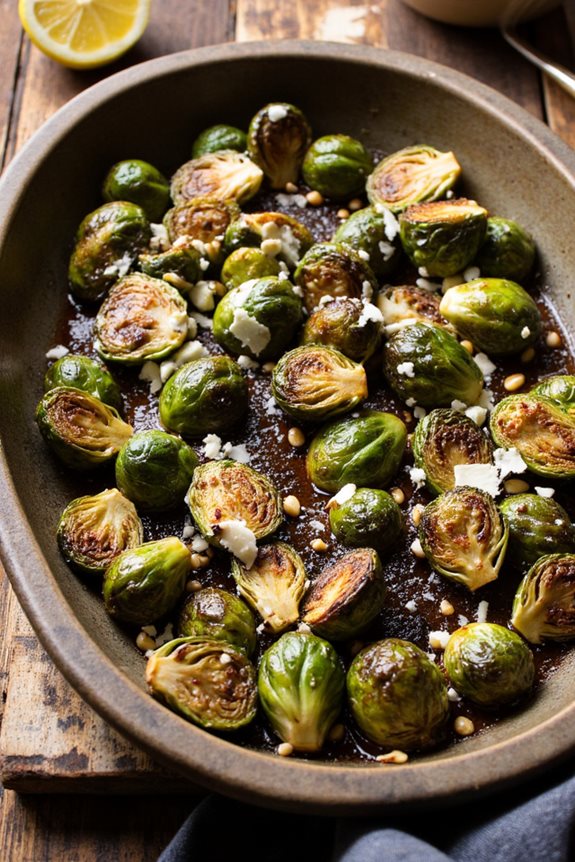I’ve always believed that the best recipes strike a perfect balance between simplicity and flavor, and this Mediterranean Citrus Salad delivers on both fronts.
When bright, juicy citrus segments pair with briny olives and creamy feta, something special happens.
The vibrant colors alone might convince you to make it, but wait until you taste how the sweet-tart fruits mingle with that zesty honey-lemon dressing.
Ready to transform ordinary fruits into an extraordinary dish that’ll have everyone asking for your secret?
Why You’ll Love This Citrus Salad
- Bright winter nutrition – Packed with vitamin C and antioxidants from fresh citrus, this salad gives your immune system a boost when you need it most during cold months.
- Kid-approved flavors – The perfect balance of sweet and tart citrus appeals even to picky eaters, making it a family-friendly dish that gets everyone eating more fresh produce.
- Quick and effortless – Ready in just minutes with simple chopping and arranging, this salad is perfect for busy weeknights or when you need a last-minute side dish.
- Surprisingly versatile – Serve it as a refreshing appetizer, light lunch, colorful side dish, or even as a palate cleanser between courses at dinner parties.
- Budget-friendly brightness – Uses affordable winter citrus and pantry staples like olives and feta to create an elegant dish that looks and tastes much more expensive than it is.
What Ingredients are in Citrus Salad?
This Mediterranean Citrus Salad combines the bright, juicy flavors of winter citrus with classic Mediterranean ingredients for a revitalizing dish that works any time of year.
The beauty of this salad lies in its simplicity—just a handful of quality ingredients that complement each other perfectly.
As a Wisconsin culinary professional who values local sourcing, I’ve adapted this Mediterranean classic to incorporate what’s available in our region, especially during those long winter months when we’re all craving something vibrant and fresh.
Ingredients:
- 2-3 different citrus fruits (oranges, blood oranges, grapefruits, or mandarins)
- 1 small red onion, thinly sliced
- 1/4 cup Wisconsin-made feta cheese, crumbled
- 1/4 cup Kalamata olives, pitted
- 2 tablespoons extra virgin olive oil
- 1 tablespoon fresh lemon juice
- 1 tablespoon locally-sourced honey
- Fresh mint leaves (which my daughters help me pick from our small herb garden)
- Salt and freshly ground black pepper, to taste
- Optional: 1/4 cup toasted Wisconsin pecans or walnuts
When shopping for this salad, the quality of your citrus makes all the difference. During winter months, citrus is at its peak sweetness and juiciness—nature’s way of providing vitamin C exactly when we need it most.
Can’t find blood oranges? No problem. This recipe is forgiving and adaptable to whatever looks best at your local market or co-op.
And a little insider tip? This salad is a fantastic way to get kids interested in trying new foods. My three daughters initially turned their noses up at the olives, but the sweetness of the citrus balanced with the salty feta turned them into Mediterranean food fans.
Who knew a simple salad could bridge the gap between kid-friendly and sophisticated dining?
How to Make This Citrus Salad

Creating this Mediterranean Citrus Salad is about as simple as food prep gets, which makes it perfect for busy weeknights when the kids are demanding dinner and patience is running thin.
Start by preparing your citrus fruits—I typically use a combination of 2-3 different varieties for color and flavor contrast. Using a sharp knife, cut off the tops and bottoms of each fruit, then stand them on one flat end and carefully slice away the peel and white pith, following the natural curve of the fruit. Once peeled, slice the citrus into rounds about 1/4-inch thick, or segment them if you prefer pith-free pieces. Arrange these vibrant circles on a serving platter, creating a colorful base for your salad.
Next, scatter your thinly sliced red onion (about 1 small onion) over the citrus, followed by 1/4 cup of crumbled Wisconsin feta and 1/4 cup of Kalamata olives. The combination might seem unusual at first, but trust me, the salty-tangy elements balance perfectly against the sweet juiciness of the fruit.
For the dressing, simply whisk together 2 tablespoons of extra virgin olive oil, 1 tablespoon of fresh lemon juice, and 1 tablespoon of local honey until emulsified. Drizzle this mixture over the salad, then sprinkle with torn fresh mint leaves—which my daughters love helping to pick and tear. Finish with a light seasoning of salt and freshly ground black pepper to taste. If you’re adding the optional 1/4 cup of toasted Wisconsin pecans or walnuts, sprinkle them on top for a satisfying crunch.
This salad benefits from about 10 minutes of resting time before serving, allowing the flavors to mingle and the onions to soften slightly in the citrus juices. It’s during this resting period that I usually set the table with my girls, who’ve become quite the critics of plate presentation.
The key to success with this dish is treating each ingredient with respect—don’t drown it in dressing, don’t over-salt, and don’t skip the fresh herbs. Those bright green flecks of mint against the jewel-toned citrus create not just a flavor pop but a visual one that makes this humble salad worthy of company, though we enjoy it most on ordinary Tuesday nights, a burst of Mediterranean sunshine in our Wisconsin kitchen.
AI Recipe Tools
Citrus Salad Substitutions and Variations
One of the joys of this Mediterranean salad is how adaptable it can be to whatever’s in your kitchen or at your local market.
No blood oranges? Regular navels work beautifully.
Can’t find fennel? Try thinly sliced celery for a crisp texture that’s similar.
Here in Wisconsin, I sometimes swap in locally grown apples during fall for a sweet-tart twist.
My daughters love it when I add pomegranate seeds—the little bursts of juicy flavor make it feel special.
For a heartier version, toss in some crumbled feta or goat cheese, or even some toasted walnuts for extra crunch.
For an authentic Mexican twist, try adding chile lime seasoning to give the citrus a spicy kick.
What to Serve with Citrus Salad
Three perfect pairings can transform this bright Mediterranean citrus salad from a side dish to the star of your meal.
I love serving it alongside herb-roasted Wisconsin chicken, where the citrus cuts through the richness beautifully. The tangy notes also complement grilled fish—especially a delicate walleye from our local lakes.
For vegetarians, try pairing with creamy risotto or polenta. The contrast between creamy and acidic creates a magical balance that’ll have everyone reaching for seconds. My daughters always give this combo their highest praise: complete silence while eating, interrupted only by the occasional “Can I have more?”
For a true Wisconsin experience, serve this citrus salad with a crisp New Glarus Spotted Cow wheat beer, whose smooth finish enhances the bright citrus flavors.
Alternatively, crumble some aged Wisconsin white cheddar over the salad—the sharp, nutty notes create a delightful contrast with the sweet-tart citrus segments.
For perfectly cooked rice to accompany this salad, consider using a luxury rice cooker that ensures consistent, restaurant-quality results every time.
Final Thoughts
While I’ve experimented with countless salad recipes throughout my culinary journey, this Mediterranean citrus salad remains a steadfast favorite in our Wisconsin home.
The bright flavors transport us from snowy Wisconsin winters to sun-drenched Mediterranean coastlines with each bite. My daughters, even the picky ones, gobble it up—who knew kids could get excited about salad?
I hope you’ll make this recipe your own.
Swap in local honey, add Wisconsin cheese, or use whatever citrus looks best at your market. Cooking is about adaptation, isn’t it?
This vibrant, versatile salad might just become your family’s new go-to, too.





